Report on Australian Professional Standards for Teachers: Standard 4
VerifiedAdded on 2023/03/31
|22
|883
|256
Report
AI Summary
This report provides an analysis of Standard 4 of the Australian Professional Standards for Teachers, which focuses on creating and maintaining supportive and safe learning environments. The report is structured around the five focus areas of Standard 4: supporting student participation, managing classroom activities, managing challenging behavior, maintaining student safety, and using ICT safely, responsibly, and ethically. The report defines key concepts such as inclusive education and highlights practical approaches and illustrations of practice for each focus area. Examples of practice include classroom organization, high-impact teaching strategies, setting goals, explicit teaching, behavior management techniques, and the implementation of cyber safety policies. The report also references the Early Years Learning Framework and the Code of Conduct, emphasizing the importance of creating a positive and secure learning environment for all students. The report includes illustrations of practice such as photographs from childcare, schedules, positive behavior posters, and examples of cyber safety policies.
1 out of 22
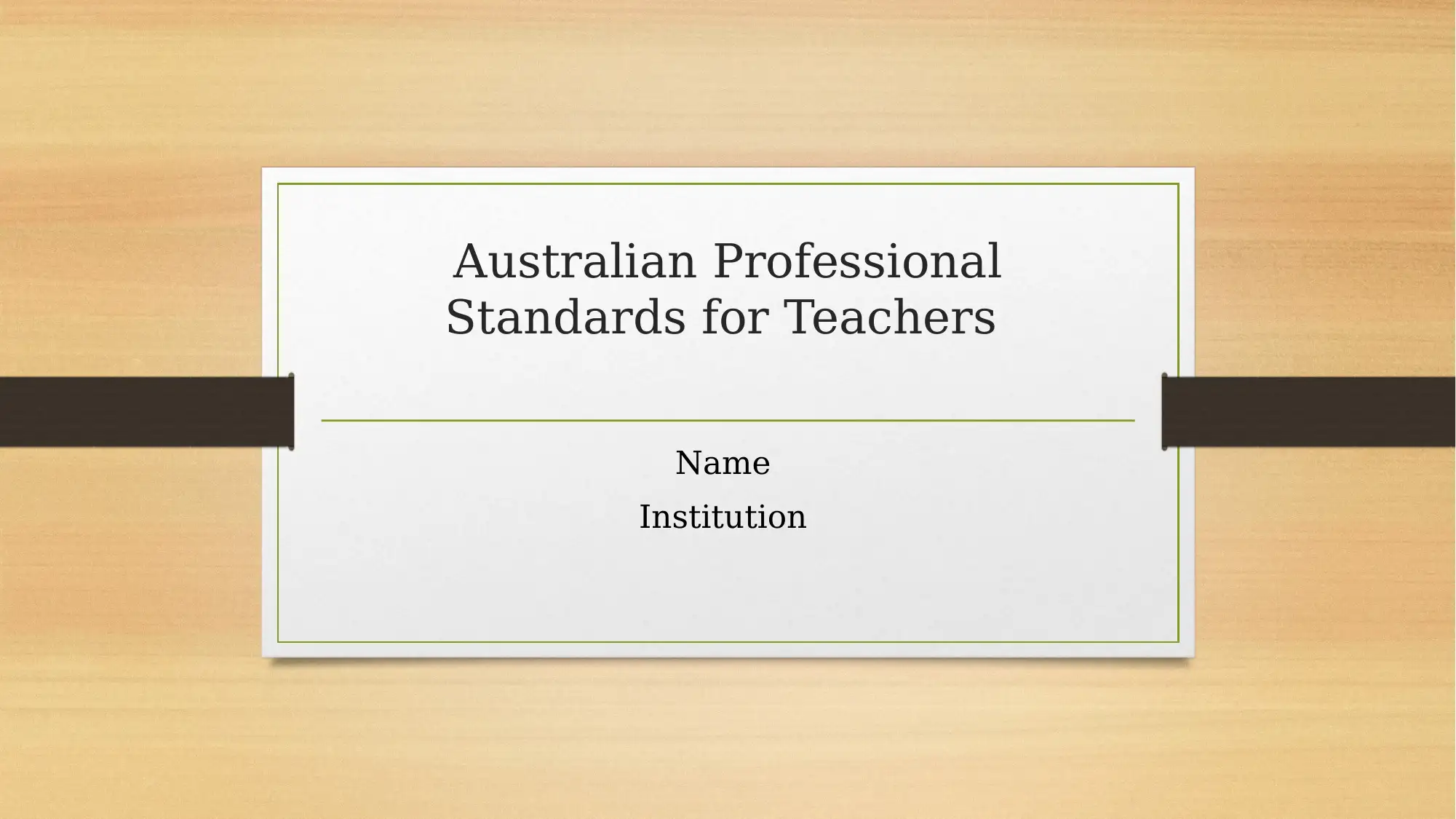
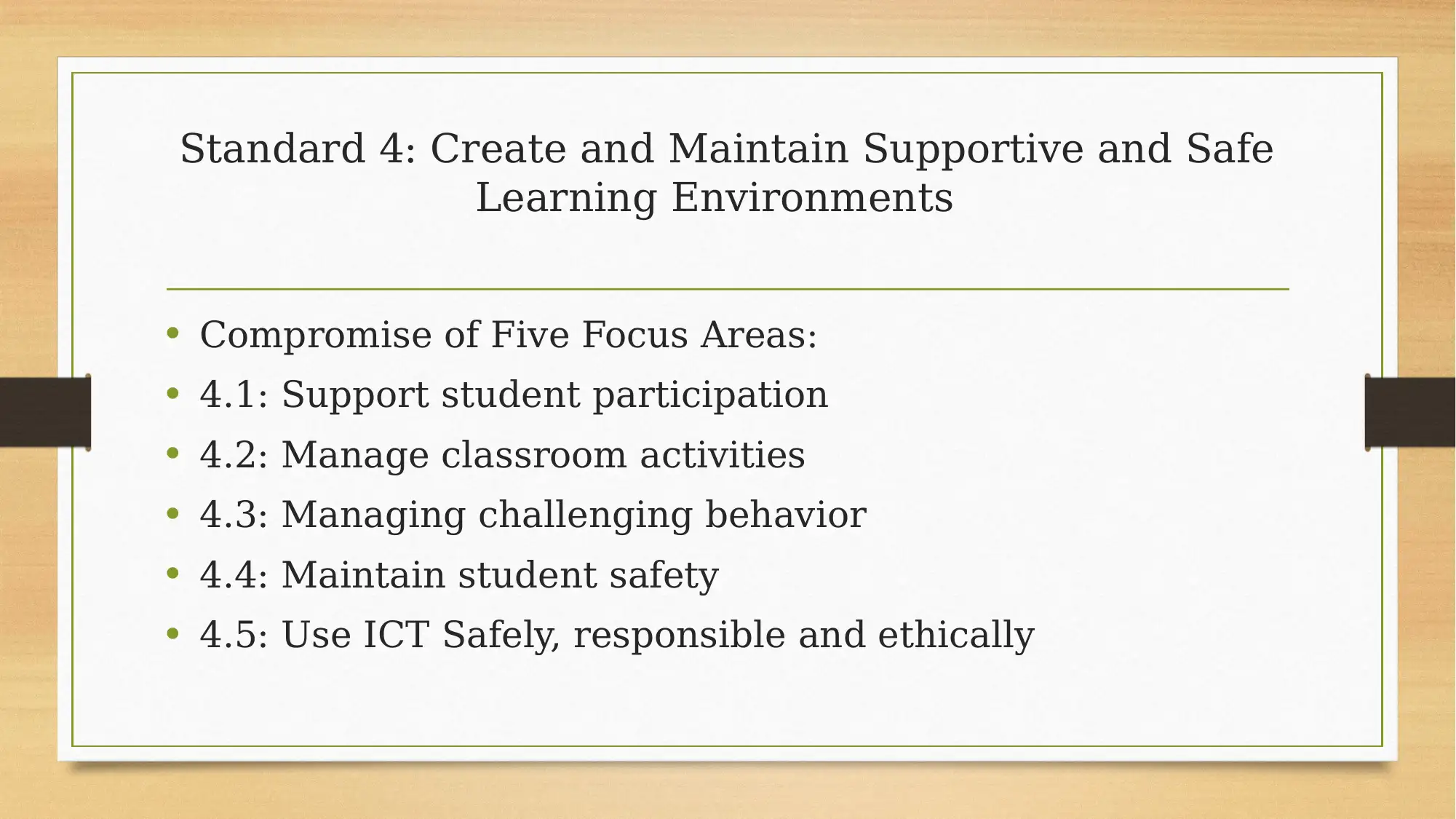
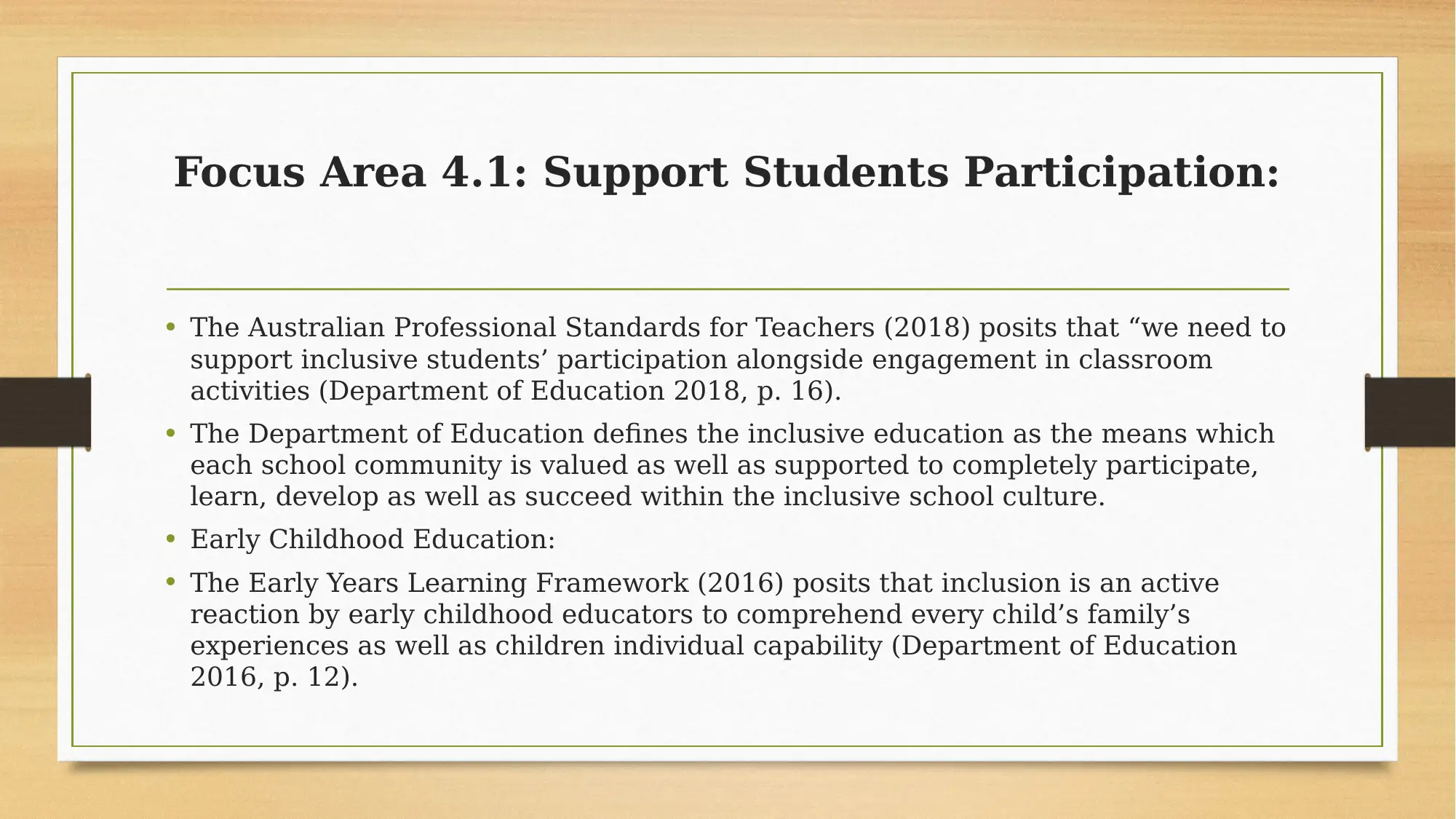

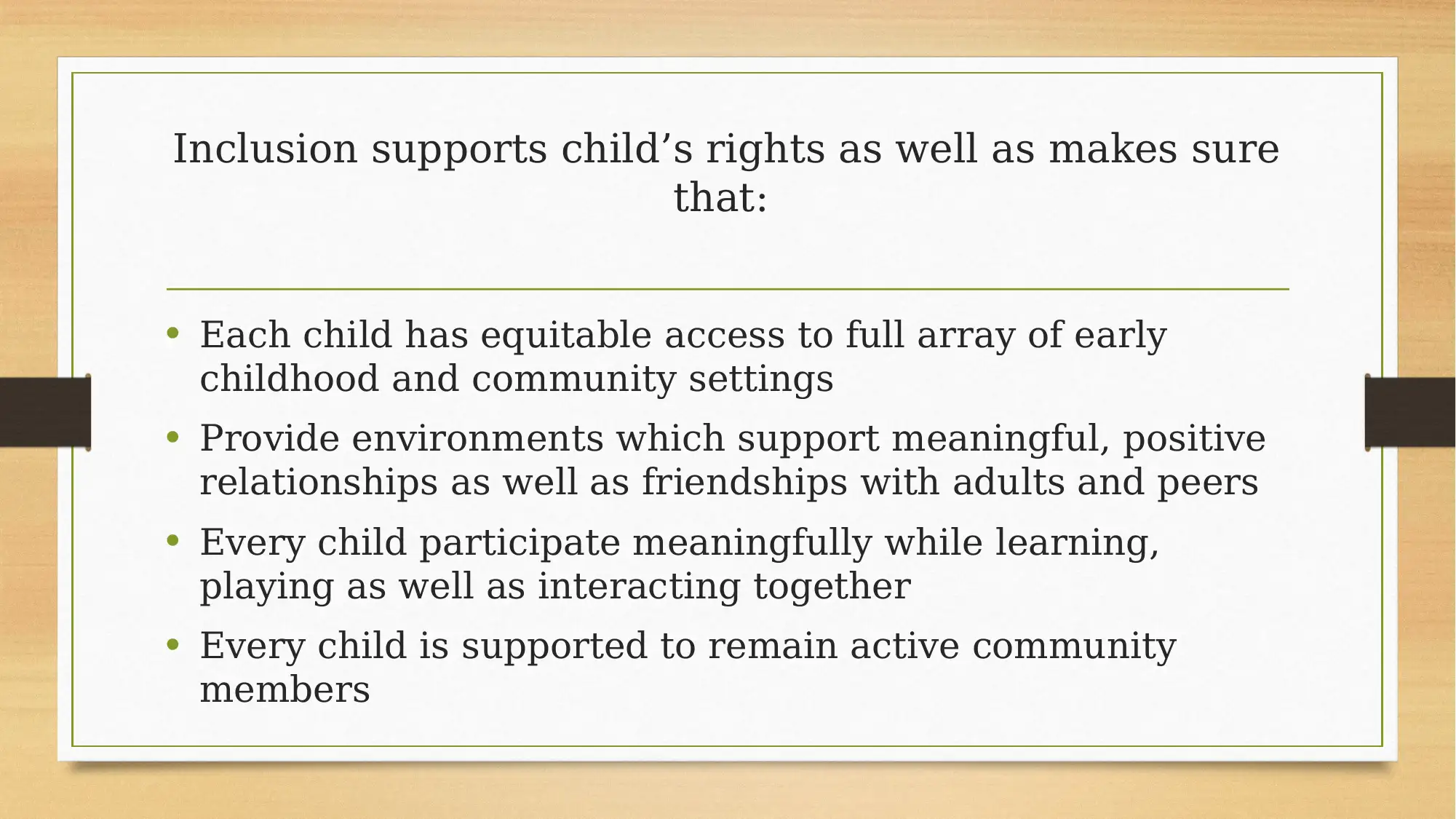
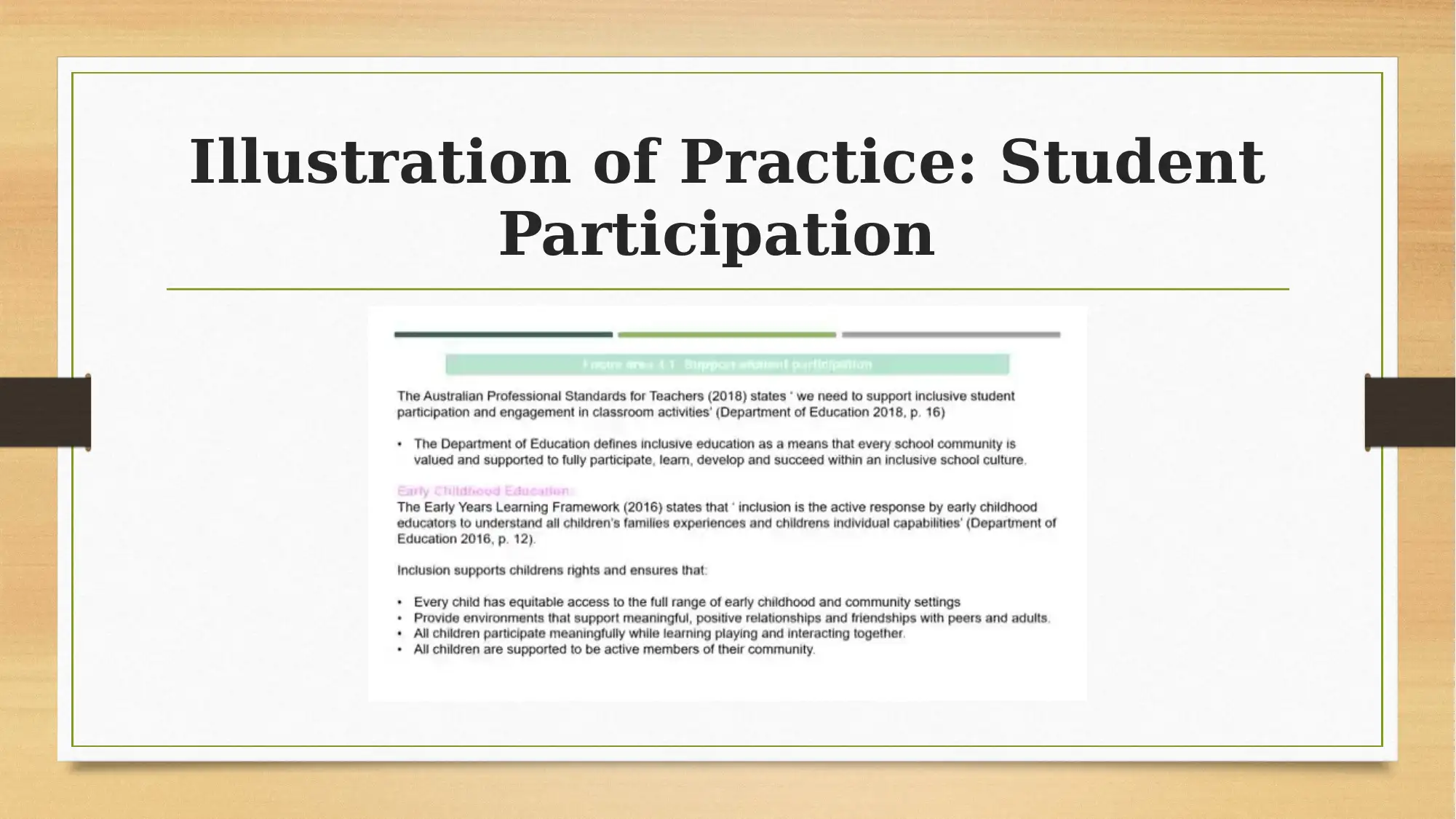
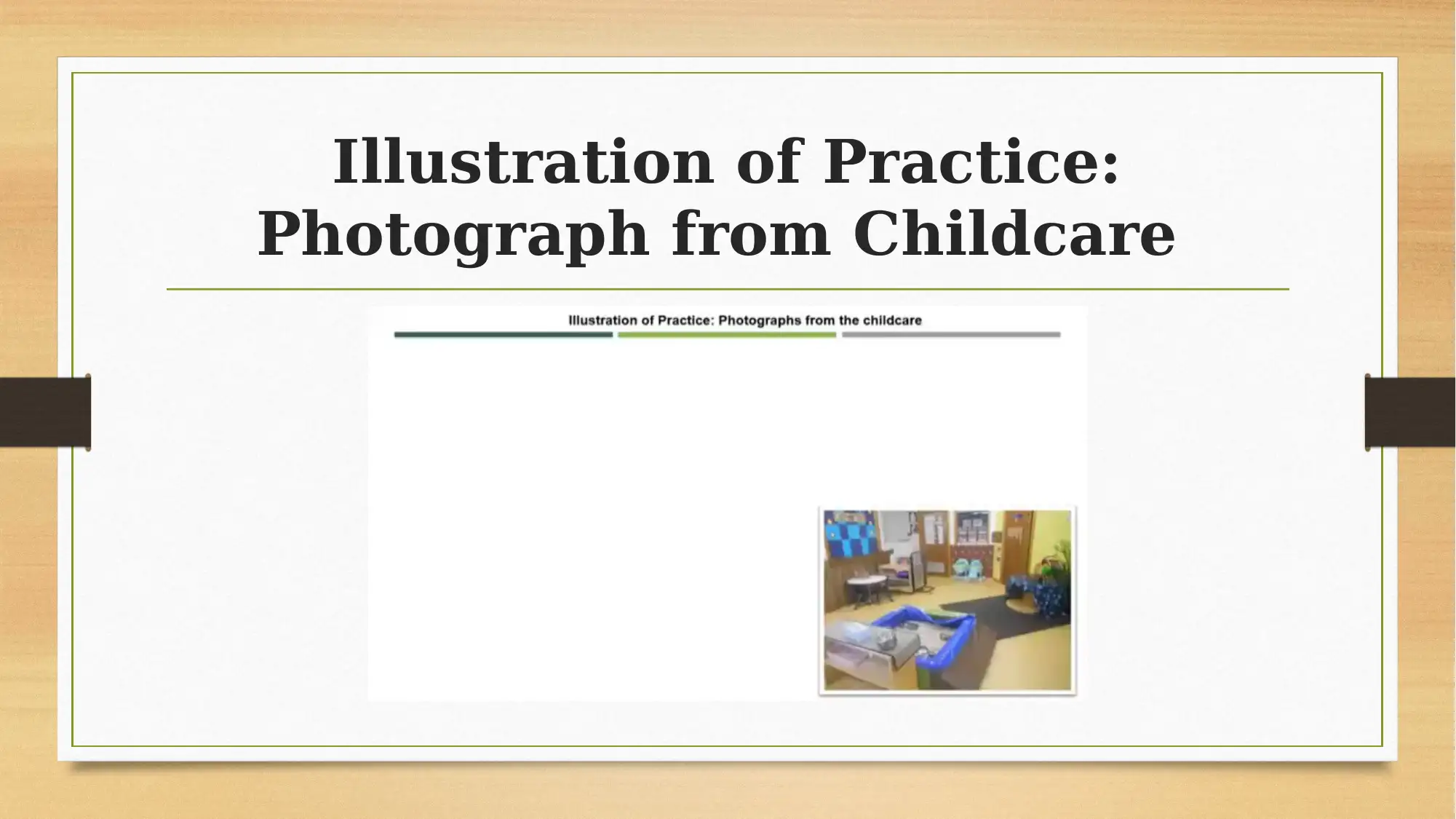
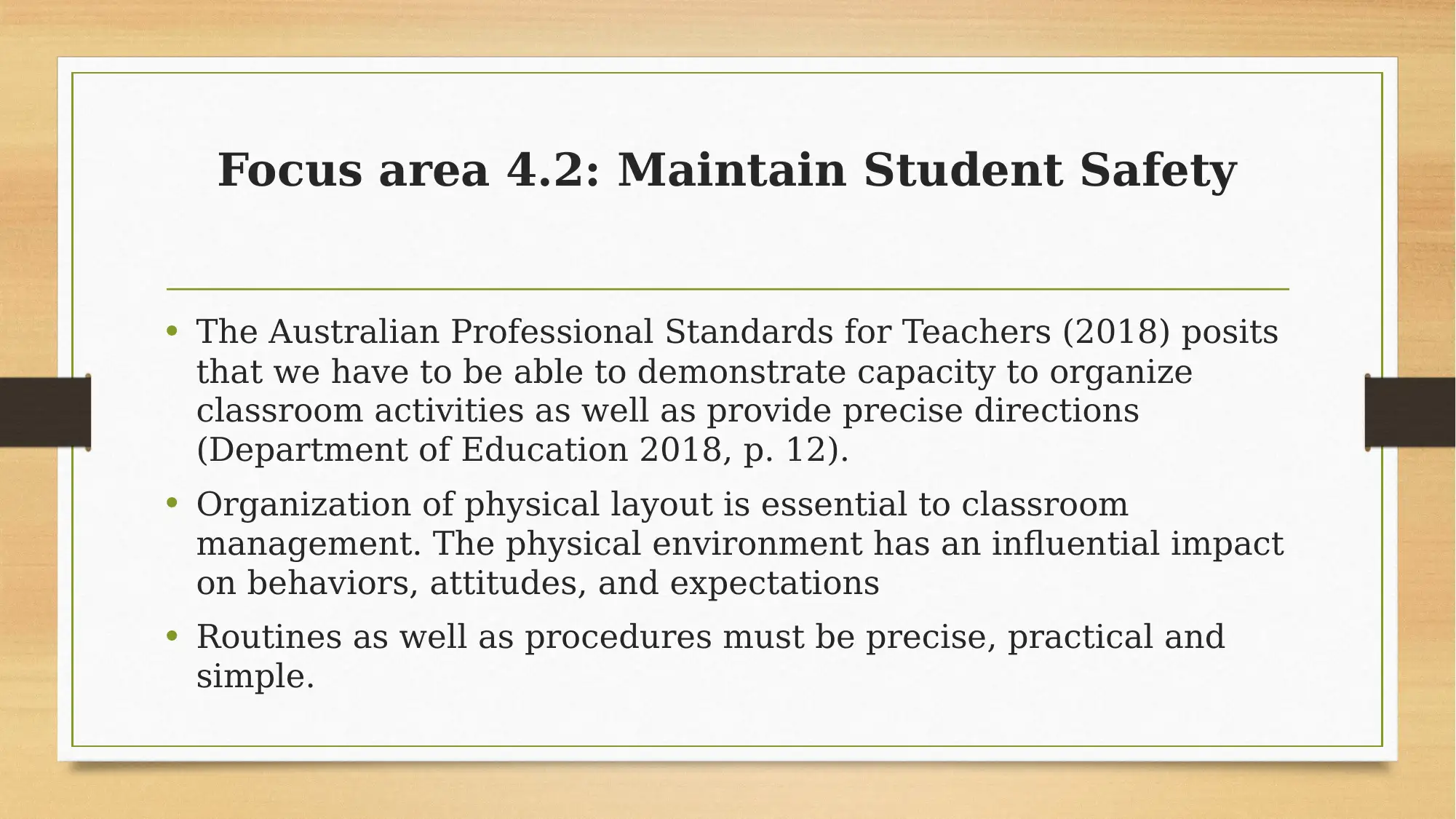
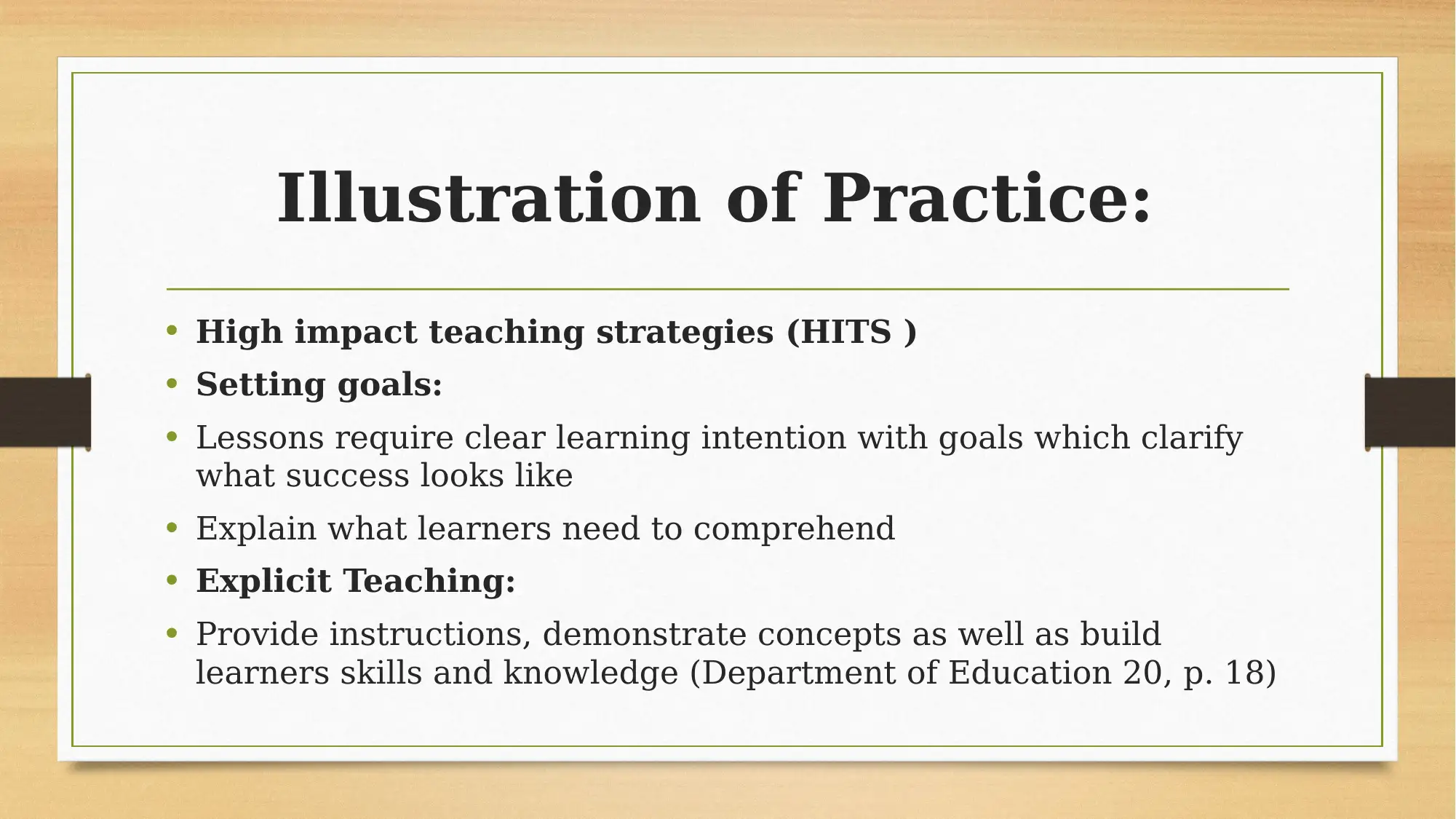
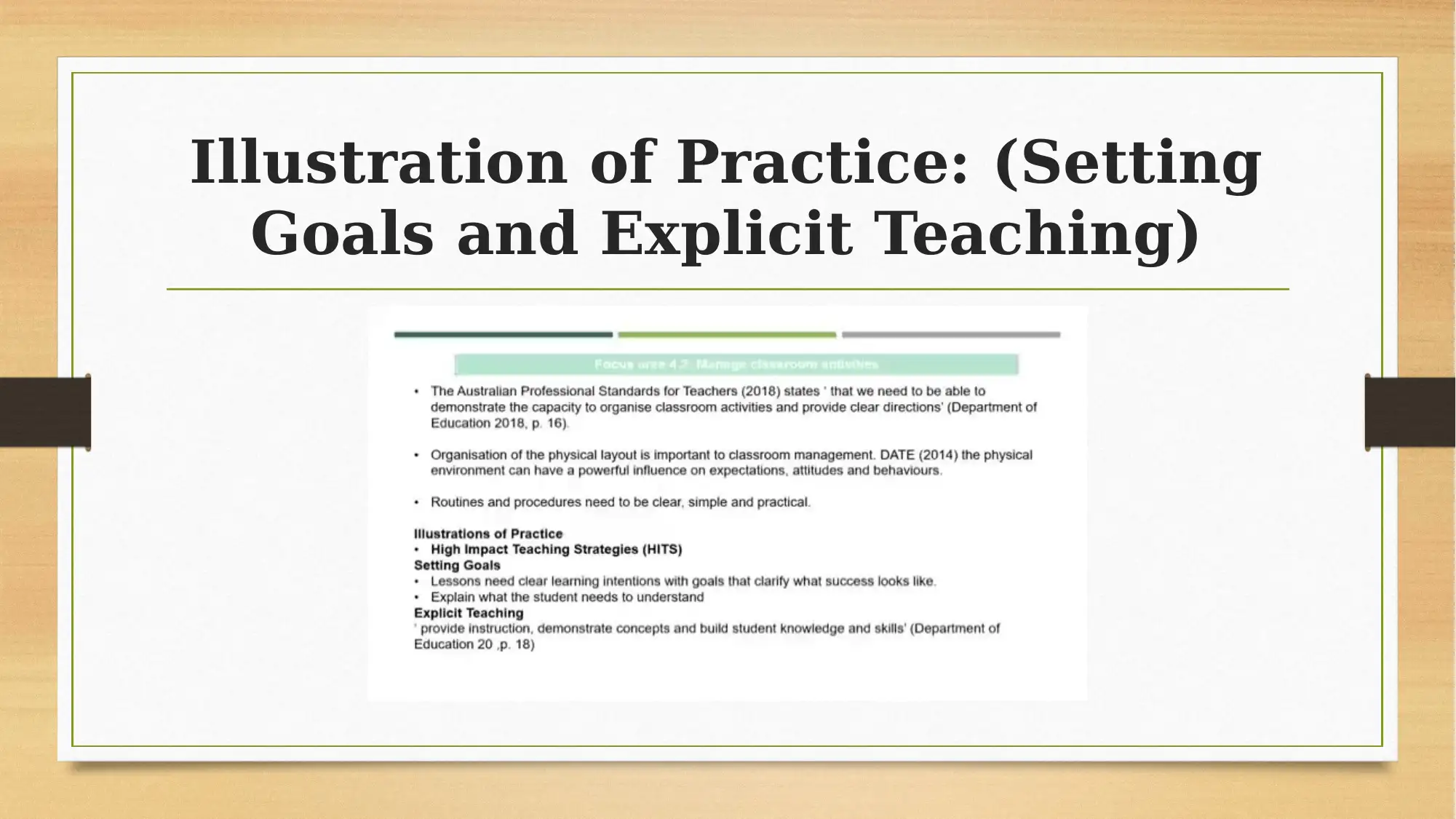

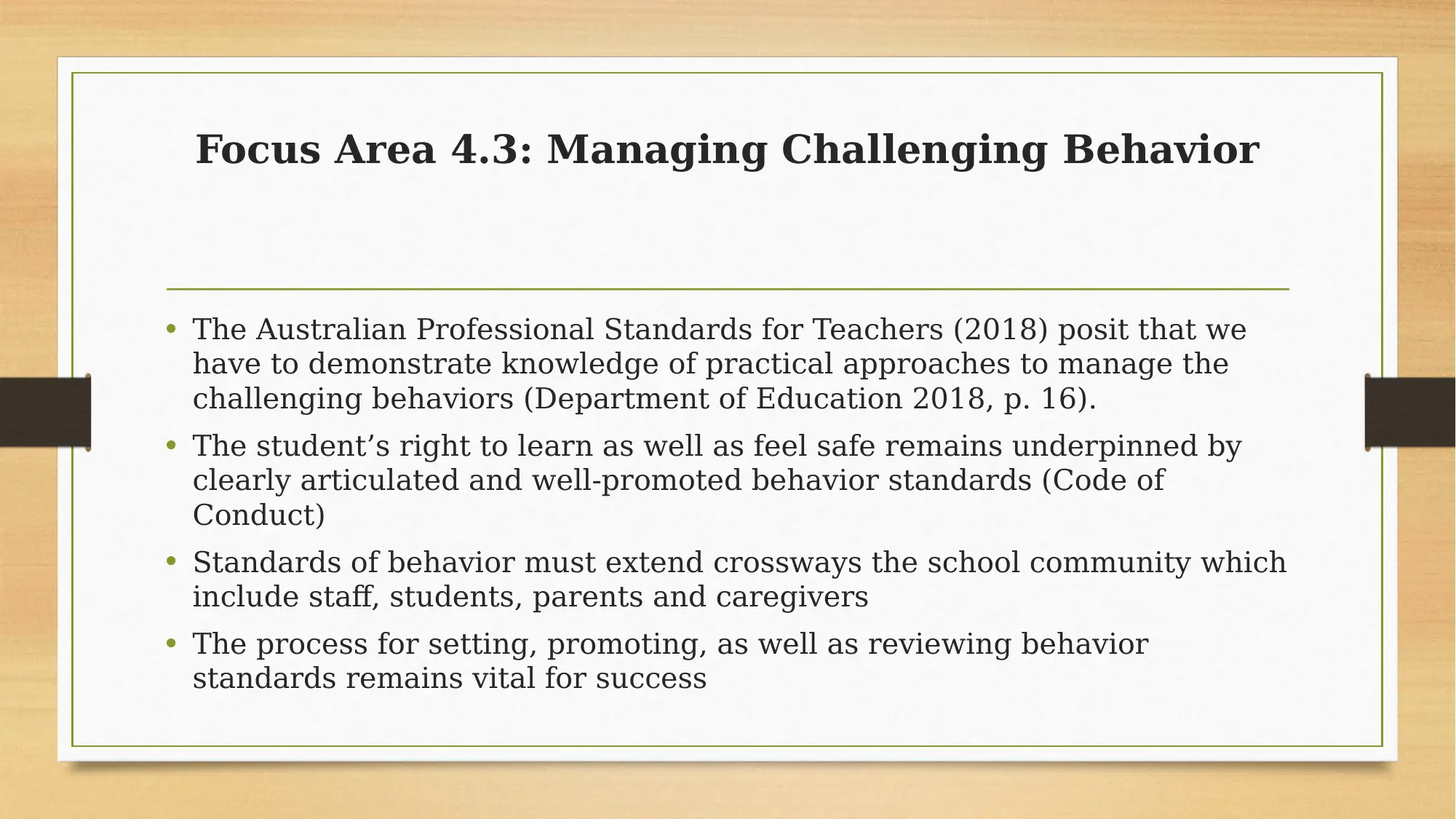
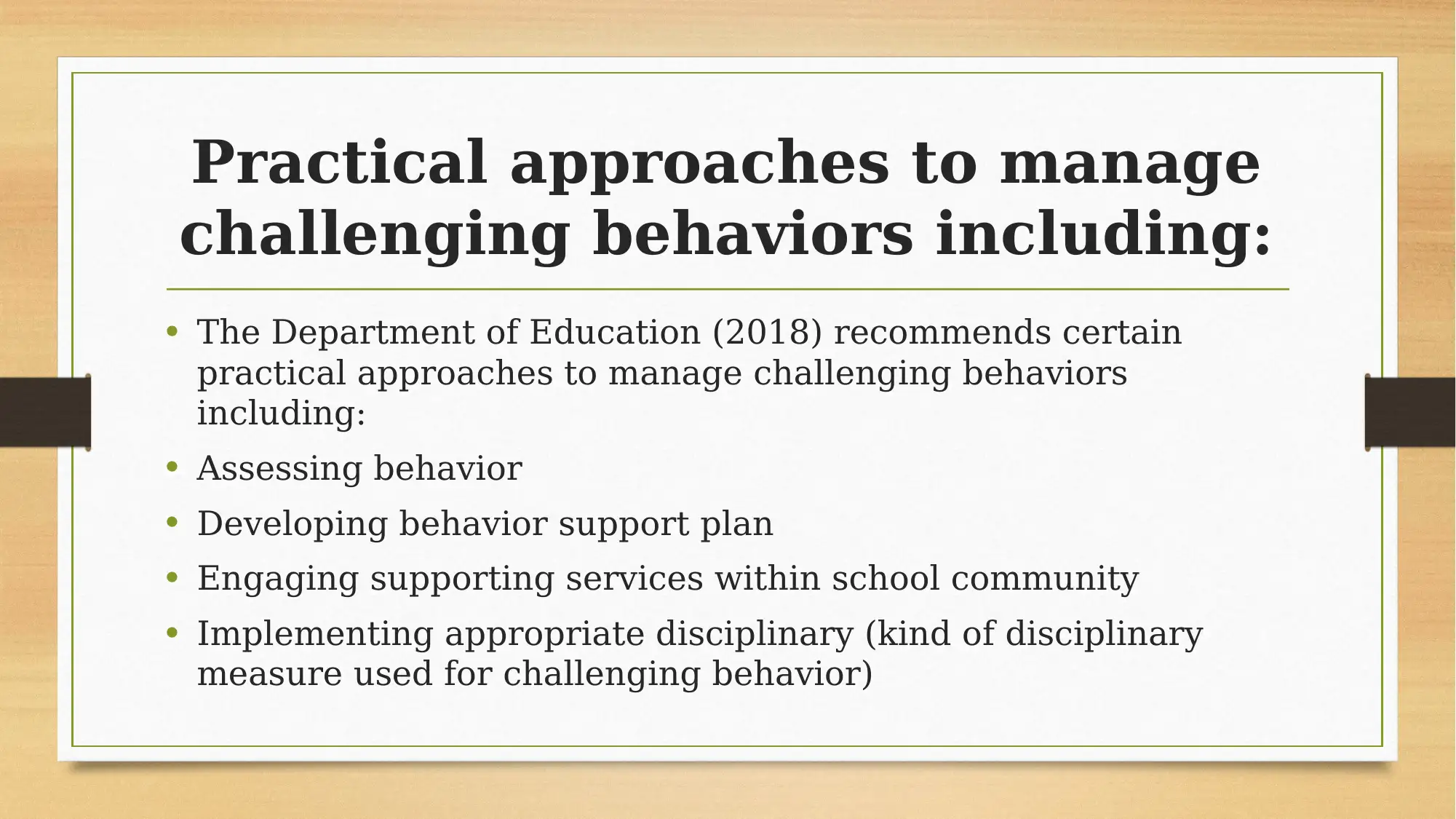






![[object Object]](/_next/static/media/star-bottom.7253800d.svg)